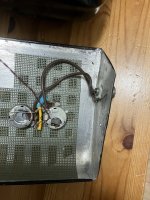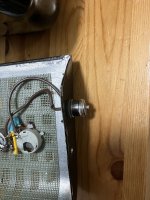Mr Mark
Squeezebaggeroni...
As per the title, can I replace a vintage screw type of connector (what is it called?) with a 1/4” female chassis Jack (mono)?
Customer is requesting this and have not had to do it before. The reason being is that his old cable is kaput, the screw end is mangled but the other end is 1/4” mono - so why not?
Customer is requesting this and have not had to do it before. The reason being is that his old cable is kaput, the screw end is mangled but the other end is 1/4” mono - so why not?


